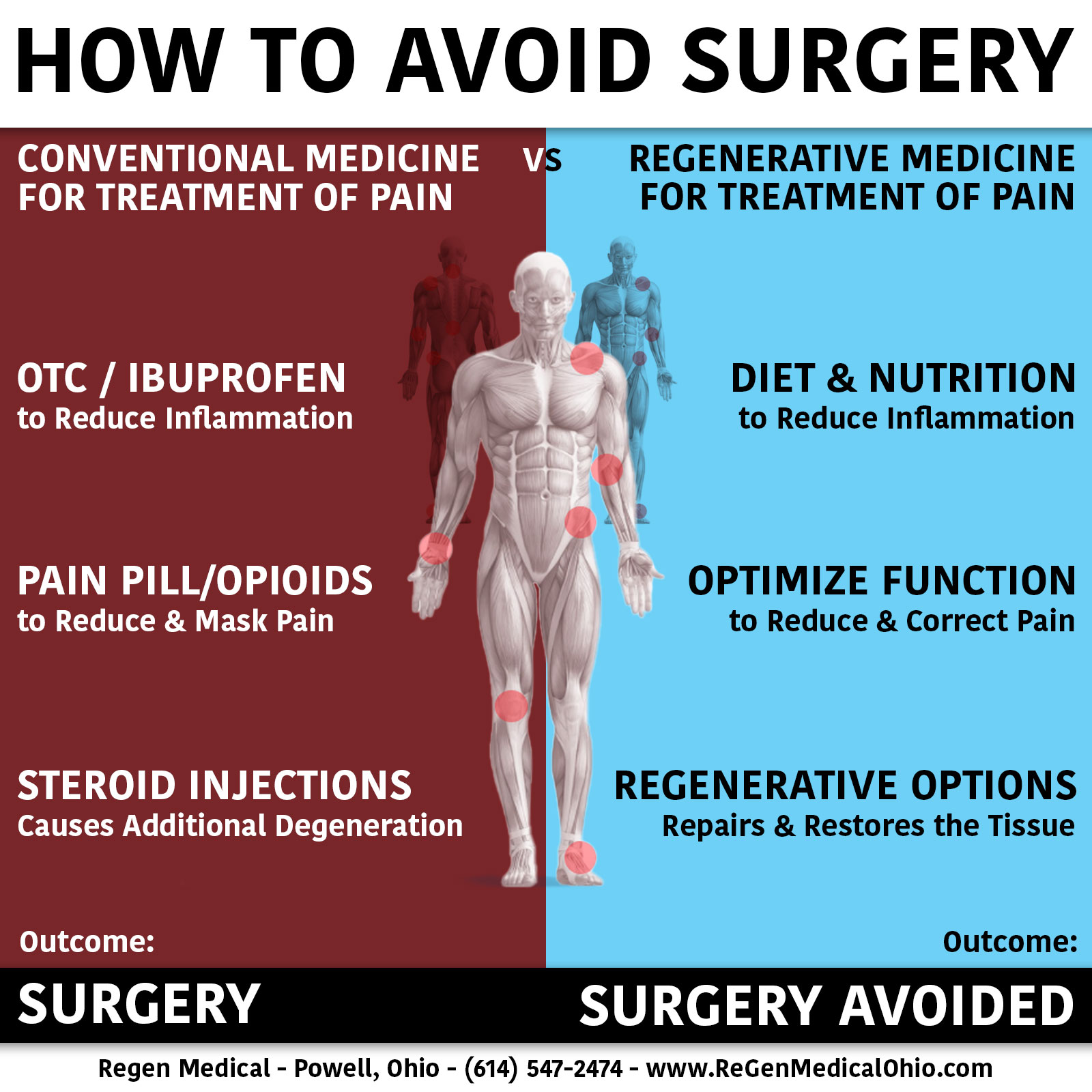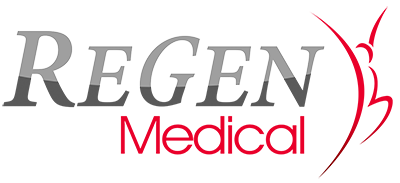
PROLOTHERAPY
Prolotherapy, or ligament reconstructive therapy, is a safe, non-surgical treatment for acute and chronic injuries.
Prolotherapy targets the joint, ligaments and tendons that are weakened and stretched out from injury or aging and actually promotes healing and repair. The procedure involves the injection of a solution into or around a damaged joint, ligament or tendon. This stimulates the body’s own natural healing response and helps restore strength and integrity to the damaged area. The procedure involves injecting a solution into the damaged joint, ligament or tendon. This stimulates the body to begin the healing process to also restore strength and function.
Common problems treated with Prolotherapy include joint arthritis, TMJ dysfunction, chronic neck and back pain, shoulder injuries, Fibromyalgia, injuries to the wrists, elbows, knees and ankles, and whiplash-type injuries.
With Prolotherapy, the pain is NOT covered up. The injury and source of the pain is targeted, treated, and healed.
PLATELET RICH PLASMA (PRP)
Platelet Rich Plasma (PRP) injections are used for the repair of chronic degenerative joints, ligaments and tendon injuries. This newer technology is similar in the mechanism of action to prolotherapy, but often yields much quicker results.
PRP is blood plasma with concentrated platelets. PRP is formed by drawing a small amount of blood from the patient and concentrating the blood plasma and platelets in a centrifuge. The concentrated platelets found in PRP contain huge reservoirs of bioactive proteins, including growth factors that are vital to initiate and accelerate tissue repair and regeneration. These bioactive proteins initiate connective tissue healing: bone, tendon and ligament regeneration and repair, promote development of new blood vessels and stimulate the wound healing process resulting in new collagen formation.
Conditions treated include:
- Overuse injuries to joints including ankles, knee and shoulders
- Overuse injuries of muscle tendons and ligaments
- Joint arthritis
- Spine arthritis
- Persistent neck, mid-back, and low back pain
- Pain associated with degenerative disc disease of the spine
- More specific injuries include:
More specific injuries treated include:
- Tennis elbow, or lateral epicondylosis
- Golfer’s elbow, or medial epicondylosis
- Carpal tunnel syndrome
- Knee ligament tears
- Shin splints
- Partial thickness rotator cuff tears
- Plantar fasciitis
- Patellar tendinitis or tendinopathy
- Achilles tendonitis
- IT band syndrome
- Hip bursitis, or greater trochanter pain syndrome
Platelet Rich Plasma (PRP) also targets the source of pain while healing and regenerating injured tissue.
This therapy is changing the way doctors and sports medicine physicians treat injury, pain and aging.
HOW DOES PROLOTHERAPY AND PRP WORK?
Prolotherapy and PRP is a simple, effective, and elegant therapy that works on a very simple principle. By injecting a stimulating solution at the site of pain, we can wake up the body’s own natural healing response and repair mechanisms.
The most basic Prolotherapy solution contains a naturally occurring sugar (dextrose) combined with an anesthetic medication (lidocaine). This solution does NOT contain cortisone, which is known to decrease inflammation but can hinder or stop the healing process. Acute pain may be relieved with cortisone, but repeated use causes a weakening of the tissues and could lead to the development of chronic pain.
Platelet Rich Plasma (PRP) is is formed by drawing a small amount of blood from the patient and. The blood is then put in a centrifuge machine that separates out the activated platelets, growth factors and the healing cells. Rich in healing cells and growth factors, the blood is then injected back into the areas needing repair.
When injuries occur, the area may not heal completely due to inadequate length of the time for the injury to heal completely, poor blood supply or possibly from improper treatment. Ligament and tendon injuries can take a significant amount of time to heal. If activity is resumed to quickly before complete healing has occurred, the damaged ligaments or tendons can remain loose, allowing dysfunctional loading of the joints causing pain and eventually arthritis. Arthritis can develop in the joints and spine as a result of instability in the ligaments and the supporting structures. This is where Prolotherapy and PRP can intervene and stabilize the structures, decreasing the progression of pain and aging of the joint.
When stretched, small nerve fibers in these damaged ligaments transmit pain impulses to the brain. Through a subconscious reflex, the surrounding muscles go into a tight and painful spasm in an attempt to stabilize the joint. This causes the region to feel tight, stiff, achy, burning, tingling, numb, fatigued, and painful. The individual will often notice painful knots within the affected muscles. These muscles become tight and painful as they try to compensate for the weak and damaged underlying tissue structures. The spasms reduce proper blood flow through the muscle tissue and can cause more pain. Not only are these symptoms felt locally, but they are often referred through nerve pathways into the legs and feet, arms and hands, and head (headaches). In other words, pain felt in the head, arms, or legs may actually be due to instability in the neck or back.
With these procedures we are harnessing the body’s own ability to heal and supercharging the process to repair and rebuild injured tissue. This will lead to stronger and more supportive muscle, tendon, ligament, and joint structures, an in time less pain and significantly improved function.
PRP FREQUENTLY ASKED QUESTIONS
What is Platelet Rich Plasma (PRP)?
The PRP is a blood product concentration of the growth factors and other healing cells from the patient’s own blood.
What is the therapeutic mechanism of Platelet Rich Plasma?
The apheresis process separates the autologous blood into platelet rich plasma (PRP) and platelet poor plasma (PPP). The PPP is manually drawn off to leave PRP. This produces a product available for injection back into the patient. Included in the procedure are the venipuncture, preparation of the blood and centrifuge / separation / mixing / activation processes. This is needed to obtain a solution to stimulate the body to re-initiate the healing inflammatory processes.
How is PRP administered?
It is injected percutaneously (through the skin) into the intra-articular (inside the joint) space and into or around tendon and ligament tissues. A “peppering technique” with the needle is used to distribute the PRP at multiple sites along the injured tissue. Another method sometimes used is a percutaneous tenotomy procedure. After numbing the area with anesthetic (lidocaine), this technique uses direct needling of the injured tissue, prior to injecting the PRP into the tissue irritated by the tenotomy needling technique.
What tissue types are appropriate for treatment with PRP?
Acute and chronically injured tendons, ligaments, joint capsules and articular surfaces are positively impacted by treatment.
How many injections are given with each treatment?
Often a patient will receive 20-40 injections using the tenotomy technique described above. In addition, there are a corresponding number of superficial and deep anesthetic injections done to help alleviate the sensations from the tenotomy needling. Total injections may range from 40 to 80 with the deep therapeutic injections and anesthetic numbing injections are totaled.
How many injections are needed?
Typically 3-5 injection visits are anticipated depending on the injury. Some patients with minor issues may not require as many injections, while others with more extensive issues may require more than this average.
Do the injections hurt?
You will feel a small pinch to numb the sites for the injection with anesthetic (lidocaine), and then the PRP injections are typically very well tolerated by most patients.
Do I need to be put to sleep for the procedure?
No, only local anesthetic is used for the procedure. You will be awake and talking with the doctor throughout the procedure.
What is the recommended frequency of treatment for PRP?
The frequency of treatment is typically every 4-6 weeks ideally. Prior to initiating PRP injections, a thorough consultation and examination is performed, including possibly imaging tests (x-rays, musculoskeletal ultrasound, CT, MRI), for pre-procedure planning.
What is the expected length of treatment for PRP?
Typically it is 4-5 months, but could be longer in certain cases.
What are the objective signs of successful PRP treatment?
Decreased pain, decreased use of pain medications, increased functional activities should be seen as the patient improves.
What are the positive benefits of Platelet Rich Plasma (PRP) injections for you?
Benefits include improving the collagen content of the ligaments, tendons, and capsular tissues at the cervical facets, and improving the health of the joints or spine. Collagen acts to reinforce tissue making it more resilient and able to withstand more force through the structure. This allows higher levels of functional activity with less pain.
Will PRP cure my arthritis?
While there is no cure for osteoarthritis, PRP treatment of instability should help decrease the excess motion in the joints that can lead to worsening of arthritis. Treatment with PRP could slow the development or progression of arthritis and should make flares of the tissue less frequent. This treatment aims to treat the cause of the arthritic pain, instability in the joint or poor strength in the support structures, and is not just covering up the symptoms as is the aim of many commonly used arthritis “treatments”.

ReGen Medical
Ripal Parikh, D.O.
Phone: (614) 547-2474
74 S. Liberty Street, Ste. B
Powell, OH 43065
Open By Appointment Only
ReGen Medical Ohio is located in Central Ohio and provides clinical services to the surrounding cities: Powell, Dublin, Westerville, Delaware,
Galena, Worthington, Hilliard, Gahanna, and of course Columbus, Ohio. Website Disclaimer: The content of this website is not intended to
be a substitute for professional medical advice, diagnosis, treatment or prevention of any disease. Always seek the advice of your physician
or other qualified healthcare provider with any questions you may have regarding a medical condition, diagnosis, or treatment.
HOME | REGENERATIVE MEDICINE | SPORTS MEDICINE | PRIVACY POLICY | WEBSITE DISCLAIMER | CoVID-19 | ABOUT US
